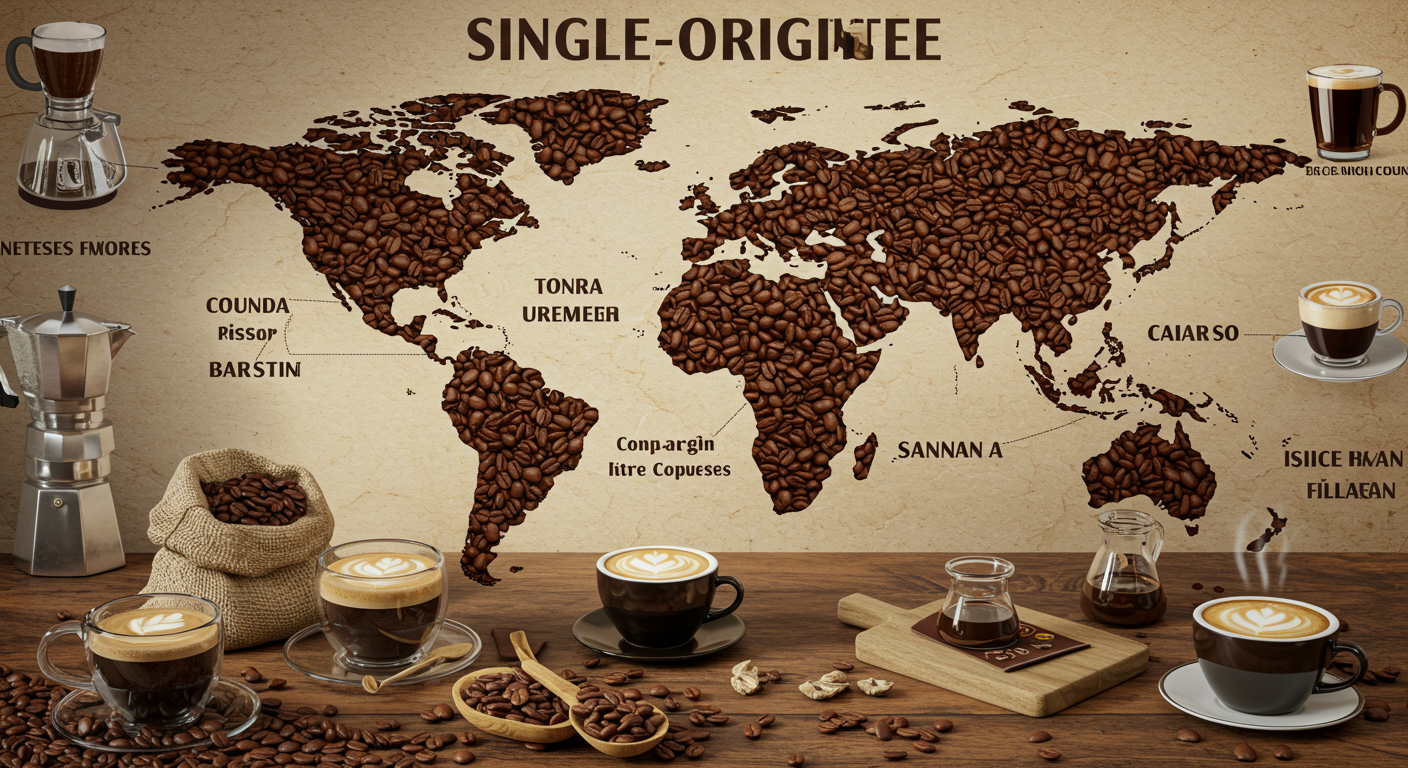Coffee lovers often hear the term single-origin — but what does it really mean, and why should you care? In the world of specialty coffee, single-origin beans have earned a loyal following for their unique flavors, traceability, and storytelling power.
In this article, we’ll explore what single-origin coffee is, how it differs from blends, and why it’s gaining popularity among passionate brewers and drinkers.
What Is Single-Origin Coffee?
Simply put, single-origin coffee comes from one geographic location. That could mean:
- A specific country (e.g., Ethiopia, Colombia)
- A particular region within that country (e.g., Yirgacheffe in Ethiopia)
- A single farm or cooperative
The idea is that the coffee reflects the characteristics of that specific origin — including soil, altitude, climate, and processing methods — much like wine from a vineyard.
Single-Origin vs. Blended Coffee
| Type | Description | Flavor Profile |
|---|---|---|
| Single-Origin | Beans from one place, often a single farm or region | Unique, complex, place-specific |
| Blend | Mix of beans from various origins (sometimes undisclosed) | Balanced, consistent, approachable |
Blends are designed to create a consistent flavor, often combining brightness, body, and sweetness. Single-origins, on the other hand, highlight specific flavor notes and can change from batch to batch.
Why Single-Origin Matters
1. Transparency and Traceability
Single-origin coffee often comes with detailed information about where and how it was produced. This promotes:
- Fairer pricing
- Ethical sourcing
- Support for small farmers and cooperatives
2. Flavor Adventure
Each origin brings distinct taste notes. For example:
- Ethiopia – floral, citrus, tea-like
- Colombia – sweet, balanced, caramel
- Sumatra – earthy, spicy, full-bodied
- Kenya – berry-like acidity, winey finish
- Guatemala – chocolate, spice, clean
This makes single-origin coffee ideal for those who want to explore and compare.
3. Seasonal Variety
Coffee is a crop, and like fruit, it has harvest seasons. Single-origin offerings change with the seasons, meaning there’s always something new to try.
4. Freshness
Because it’s produced in smaller batches, single-origin coffee is usually freshly roasted and intended for quick consumption.
Types of Single-Origin Labels
You’ll commonly see single-origin coffee labeled in the following ways:
- Country of Origin: “100% Colombian”
- Region Specific: “Sidamo, Ethiopia”
- Estate/Grower Specific: “Finca El Injerto, Guatemala”
- Microlot: A small, high-quality lot from a specific part of a farm
Microlots are highly prized and can be very limited in quantity, often with special processing methods like honey or natural drying.
Is Single-Origin Better?
Not necessarily — it depends on your taste.
Single-origin is better for:
- Coffee drinkers who want variety and nuance
- People interested in origin stories and ethics
- Brewing methods that highlight complexity (like pour-over or AeroPress)
Blends are better for:
- Espresso (more body and balance)
- Milk-based drinks (like lattes)
- Consistency in cafés
How to Brew Single-Origin Coffee
Brewing method matters when trying to enjoy single-origin beans:
| Brew Method | Why It Works |
|---|---|
| Pour-Over | Highlights clarity and unique notes |
| French Press | Brings out boldness and mouthfeel |
| AeroPress | Customizable and flavor-expressive |
| Cold Brew | Smooth but may mute subtle flavors |
| Espresso | Best with medium-dark single-origins |
Tip: Use filtered water and weigh your coffee and water for best results.
Roast Levels and Origins
Single-origin beans are often roasted lighter to preserve and showcase their natural flavors.
- Light roast – best for fruity or floral beans (like from Ethiopia or Kenya)
- Medium roast – balanced with some sweetness (Latin America)
- Dark roast – rarely used for single-origin, as it can mask unique notes
Always check the roast profile on the bag or ask the roaster.
Where to Find Great Single-Origin Coffee
Look for these sources:
- Local specialty coffee roasters
- Online retailers with detailed origin descriptions
- Coffee subscription services (like Trade, Atlas Coffee, etc.)
- Farm-direct platforms for traceability and support
Making the Most of Single-Origin Coffee
- Take notes: Write down tasting impressions
- Experiment: Try different grind sizes and ratios
- Pair with food: Try fruit with fruity beans, chocolate with nutty ones
- Share with friends: Host a coffee tasting at home
Final Thoughts: A Journey in Every Cup
Single-origin coffee invites you to explore the world through flavor. Each cup tells a story — of a farm, a climate, a harvest — and gives you the chance to connect more deeply with your daily brew.
Whether you’re new to coffee or a seasoned enthusiast, trying single-origin beans is one of the easiest ways to elevate your experience and appreciate coffee as an artisan product.


